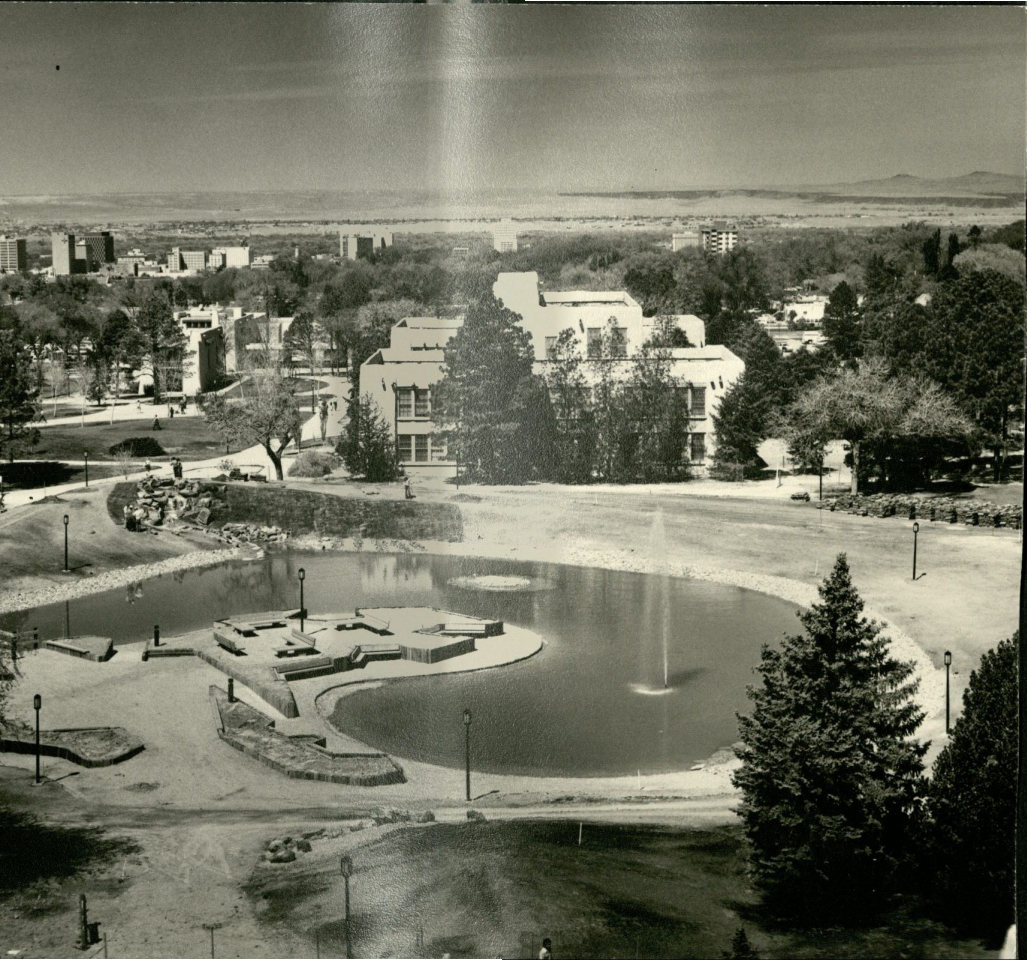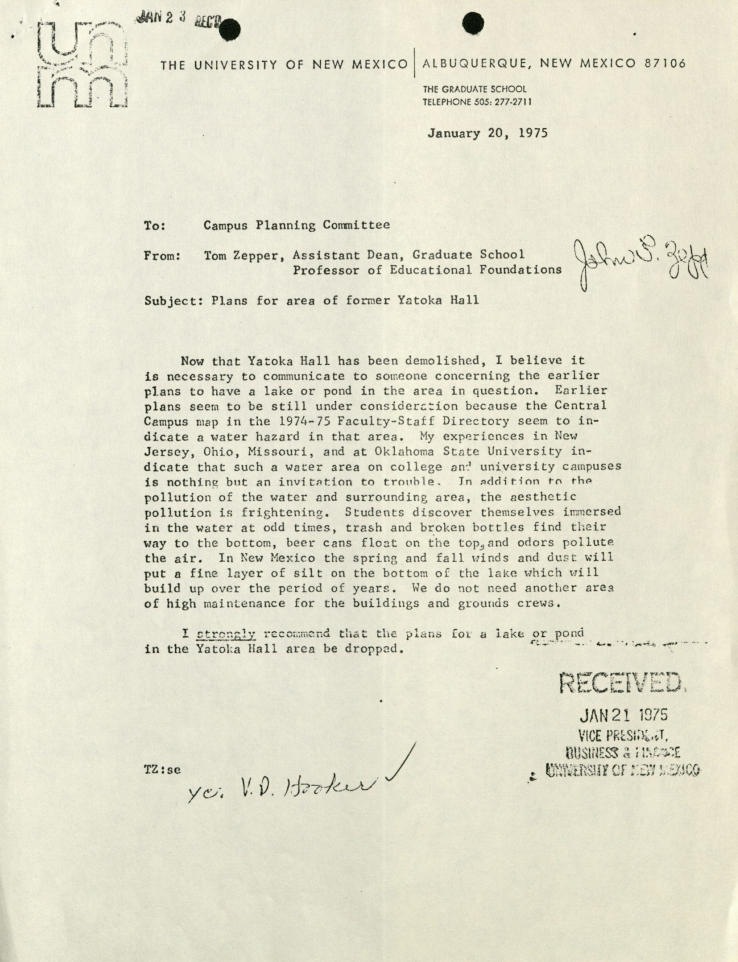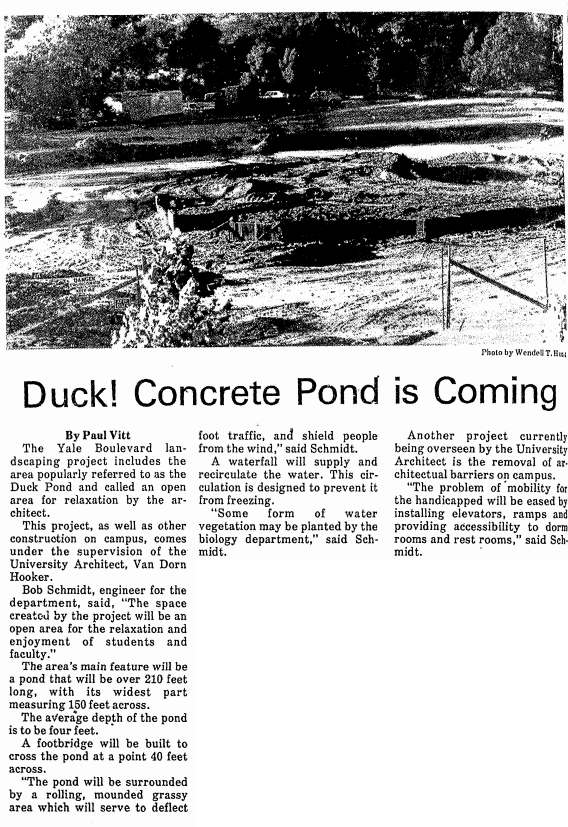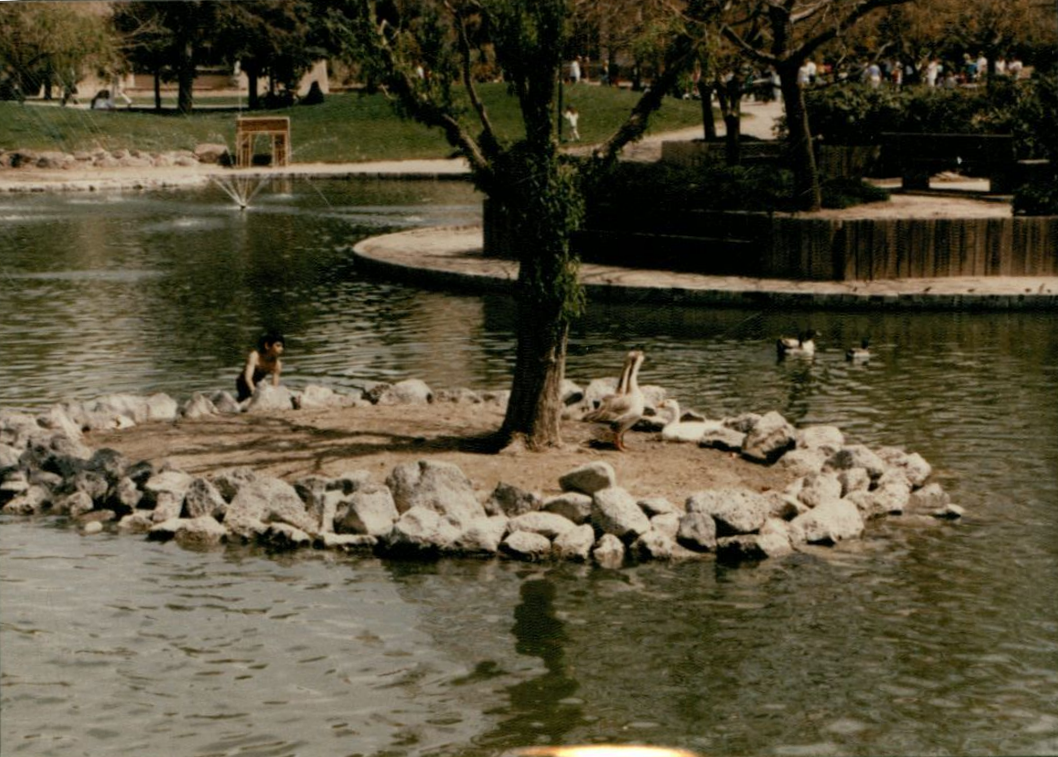Duck Pond

A photo of the Pond taken shortly after completion. shows a distinct lack of foliage on the peninsula and surrounding area.
Yatoka Hall & Y-1
Yatoka Hall was originally built in 1928-29. It started off as a men’s dormitory before being converted into offices. The offices housed the College of Business Administrations, laboratories for the College of Nursing, a U.S. post office, art studios, American Studies, and a Mr.s Blum’s coffee shop.Y-1 was an adjacent wood frame building built after World War II, It was also remodeled into offices. On January 6, 1975 both building began to be demolished and salvaged by the physical Plant Department.
Before Construction
In the fall semester of 1974 the parking lot between Scholes Hall and Zimmerman Library was closed. Yale Boulevard was also removed, spanning Roma on the North to the Alley behind Mitchell Hall. People original complained about the loss of the parking lot, but soon after it was replaced by the one on University Boulevard. This was however done in reluctance because they had to tear down the Pi Kappa Alpha house.
Planning
The original plan for the area was developed by Garret Eckbo who is known for his book Landscape for Living which helped define modern landscaping. His original plan was an artificial waterfall that recirculated water into the pond. A bridge with a trellis cover. He also planned to cover it with Wisteria imitating a japanese style, but couldn’t afford to. The plan was to have the pond be four feet deep, but out of safety for small children the Campus Planning Committee changed it to two and a half feet.
Name & Criticism
Original it was called the lake or University Pond, but early on students coined the name Duck Pond after it became an instant hit with the students in the fall of 1975. the Daily Lobo on the other hand referred to as a concrete lake, even thought there was no concrete used, but clay instead.the Daily Lobo also called it the No-Name pond, and criticized it constantly referring to it as the height of tackiness, obtrusive, and inappropriate. Professor Emeritus T. M. Pearce referred to it as the Pond of No Return, and suggested it should be bulldozed and returned to nature.

A letter of complaint against the pond sent to the Campus planning committee from Tom Zepper, Assistant Dean.

An article from the Daily Lobo published October 8, 1975 referring to the Duck Pond as the Concrete Pond.
Wildlife
The Duck Pond was filled for the first time in February of 1976. Trout and other wild fish were original introduced into the water, but people also released ducks and goldfish. Goldfish thrived and ducks quickly became overpopulated, the wild fish however struggled, because they weren’t acclimated to the warm water. During a scheduled cleaning in the winter of 1984 the ducks were relocated to the South Campus Golf Course Pond. During this time the ducks became wild and after cleaning they were unable to be captured, so people were asked to donate new ducks.
Community
Since construction a walk was installed around the perimited. Small rocks were removed because small children would pick them up and throw them in. For students the Duck Pond is used for lounging, sunbathing, and as a place to eat lunch and/or study. Families come to the pond and surrounding grass area to have picnics. Weddings have been held on the at on the peninsula and the bridge is a popular place for photos.

An island within the duck pond with a tree on it that no longer exist in the present.
Bibliography
Hooker, Van Dorn, Melissa Howard, and V. B Price. Only in New Mexico: An Architectural History of the University of New Mexico: The First Century, 1889-1989. Albuquerque, NM: University of New Mexico Press, 2000.
University of New Mexico Dept. of Facility Planning Records, 1889-ongoing, UNMA028, Box 57
